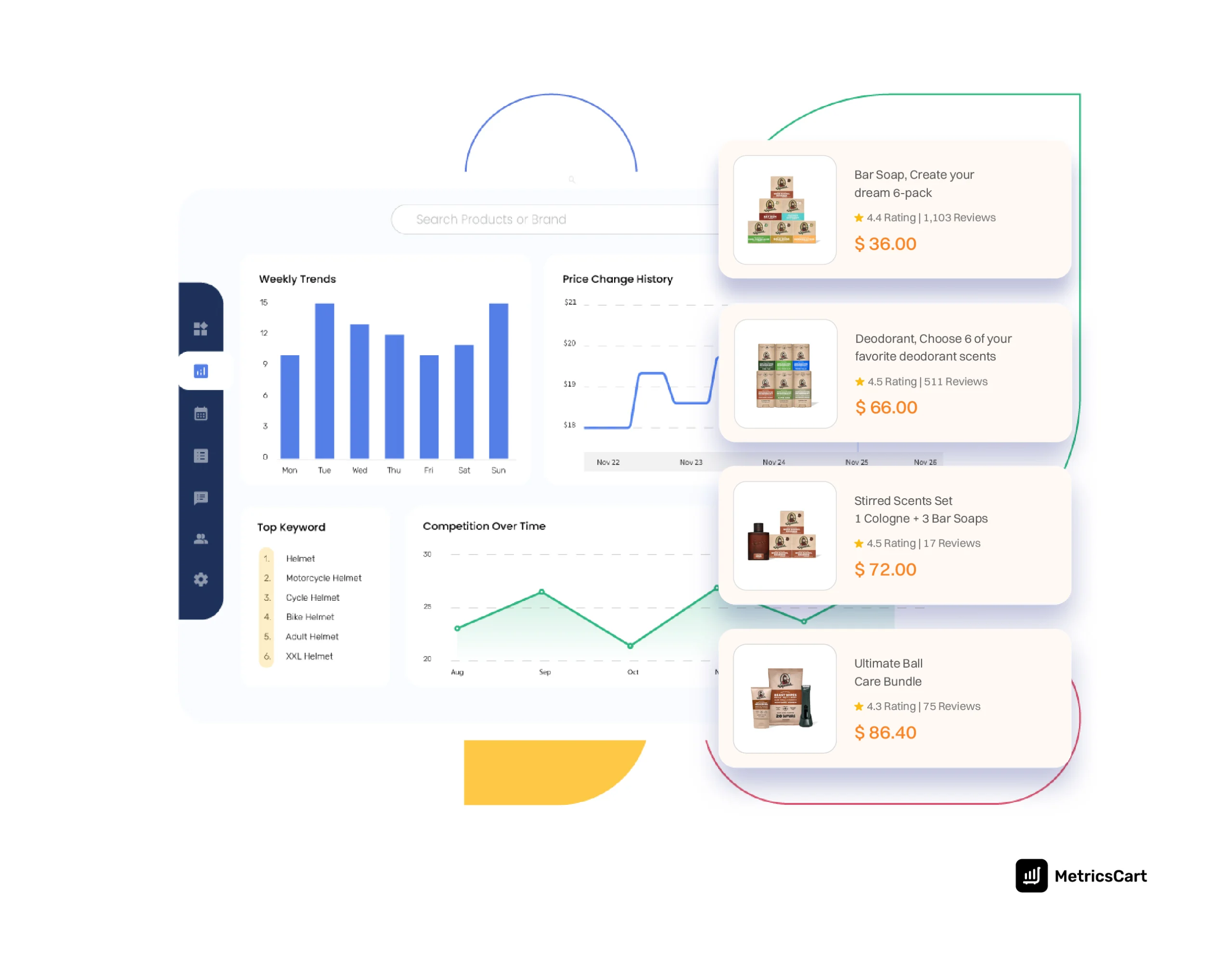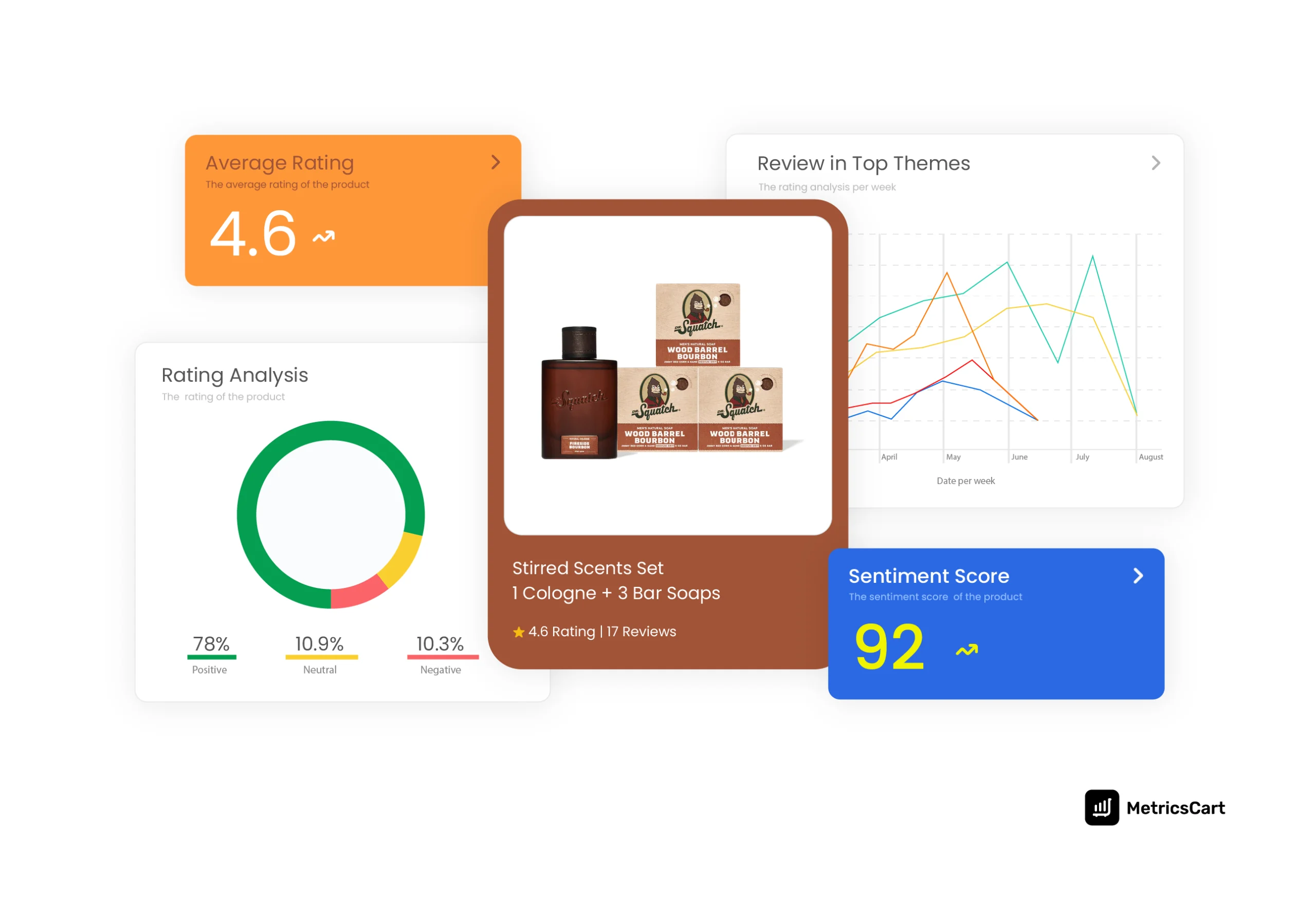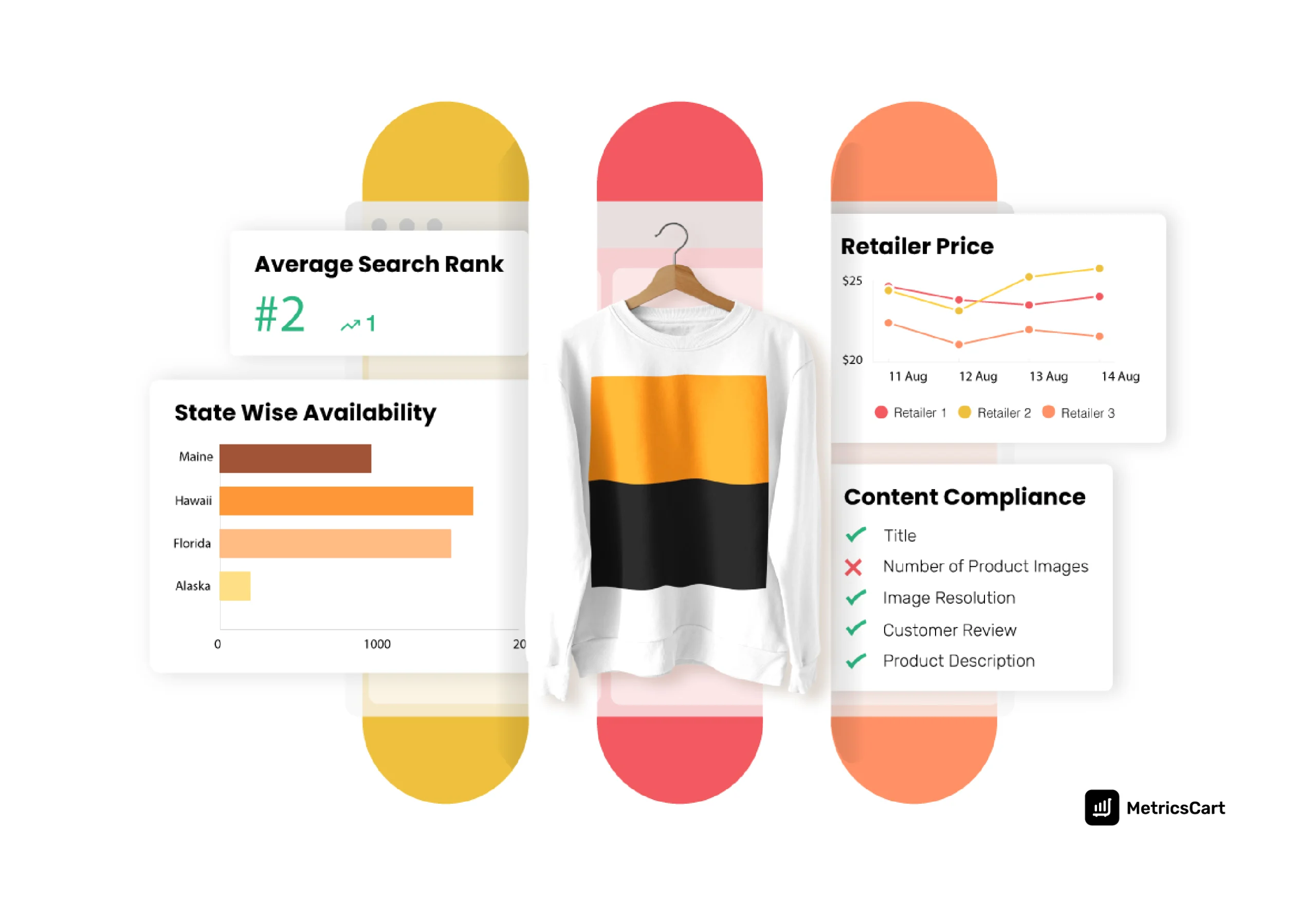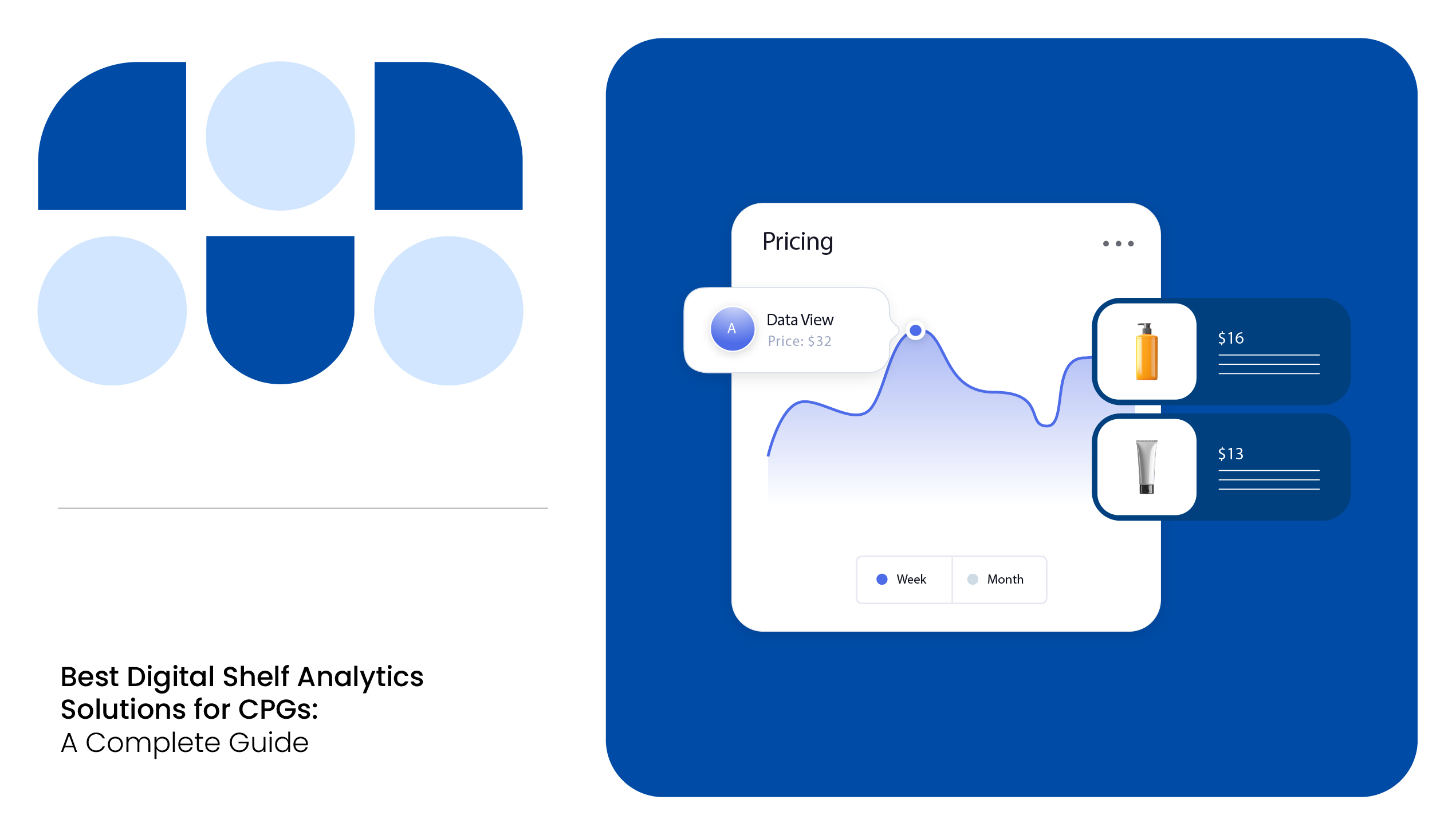The candy bar at the checkout counter, a never-before-seen cereal pack, or a random weekly magazine; we’ve all added a last-minute item to the cart just because it was easy to spot and grab. This is the power of product placement in stores. CPG brands know this well, which is why they invest heavily in prime shelf space, in-store displays, and planogram strategies.
In e-commerce, there are no such impulse aisles or hot spots. Instead, the digital shelf is the storefront. And just like how the first three search results on Google get the majority of clicks, the top few product listings on the digital shelf win the most sales. If your listing doesn’t appear at the top when customers search online, you’re not just losing visibility but also leaking revenue to your competitors.
So, how do you make your products stand out and win on the digital shelf? This article explores the five best practices you must follow while doing digital shelf monitoring for CPG brands.
Why You Must Do Digital Shelf Monitoring for CPG

Unilever recently acquired Dr. Squatch, a fast-growing US-based men’s personal care brand, for $1.5 billion. Their ability to effectively monitor and optimize product listings for their target crowd made Dr. Squatch an attractive acquisition target for Unilever, a global giant in the consumer goods space.
This acquisition highlights the importance of digital shelf monitoring for CPG brands. It’s not just about placing your products online; it’s about ensuring your products are visible, priced correctly, and appear at the top when customers search for them.
Without regular digital shelf monitoring, you risk losing visibility and, in turn, sales.
5 Best Practices to Follow in Digital Shelf Optimization for CPG Brands
“81% of shoppers start their purchase journey researching online, whether they ultimately buy online or in-store – GE Capital Retail Bank.”
As consumers increasingly turn to online research before making purchases, optimizing your digital shelf becomes inevitable. Here are the five best practices to follow for CPG digital shelf monitoring:
1. Ensure Content Hygiene
Your listing content, such as product title, description, images, videos, reviews, technical specs, product variants, pricing, and shipping details, is the first thing both shoppers and algorithms notice.
Content hygiene means ensuring this information is accurate, consistent, and up-to-date across all platforms where you sell. Even small inconsistencies, like mismatched pricing or broken images, can negatively impact your CPG digital shelf performance plus damage your brand’s credibility.
To ensure content hygiene:
- Create and follow standardized templates for product descriptions, titles, and specifications.
- Update your product display pages (PDP) regularly to reflect any changes in features, packaging, or pricing.
- Conduct regular audits of your product listings to ensure branding and pricing consistency and accuracy across all platforms.
- Regularly monitor and respond to reviews professionally to address customer concerns promptly.
A well-optimized listing content can significantly boost your Share of Search and Content Health Score. You may also do an A/B test of your listing content template to see what drives more visibility and sales.
2. Optimize Your Listings for Different Devices
App-first shopping is on the rise. 60% of product searches now happen on apps, not websites. To stay competitive, separate your Share of Search analysis by platform type: desktop, mobile, and web app.
Each platform behaves differently, and consumer behavior can vary significantly across them. For instance, on a desktop or web, shoppers tend to take more time and browse multiple options, so detailed content is important. On mobile apps, users expect fast, easy-to-read listings that fit smaller screens. Visual appeal and speed are also equally important here, as users typically prefer quick, engaging experiences on mobile devices.
Regularly monitor platform-specific metrics and adjust your strategies accordingly to stay competitive. By tailoring your product listings to each platform’s strengths and audience preferences, you can enhance visibility, improve ranking, and ultimately drive more conversions.
READ MORE | Optimizing Product Listings for Amazon Rufus AI: Best Practices for Brands
3. Take Advantage of User-Generated Content
Ratings and reviews are not just for building trust. They’re a goldmine for keywords, product improvements, and ad testing. Reviews offer valuable insights into what resonates with customers. Monitor reviews using tools like MetricsCart and extract key themes from them. Leverage this user-generated content to optimize your listing copy and identify opportunities for product upgrades.

READ MORE | Boosting Marketing Strategy with Reviews: 8 Effective Methods for Brands
4. Maintain a Healthy Inventory
E-commerce platforms prioritize listings that are consistently available and ready to ship. Amazon, for example, tends to favor FBA sellers because they rarely face stockouts or delivery delays.
If your product is frequently unavailable, it hurts your search ranking, Buy Box eligibility, and overall digital shelf performance.
Here are some tips to monitor and maintain a steady stock:
- Set reorder thresholds in your inventory system to avoid surprises.
- Use historical sales data to forecast demand accurately.
- Sync inventory across channels to prevent overselling or listing errors.
- Prioritize fast-moving SKUs so your top-performing products never go out of stock.
5. Invest in a Digital Shelf Monitoring Tool
Manually monitoring CPG digital shelf performance is complex. You have to manage thousands of SKUs across multiple marketplaces, monitoring over 15,000–20,000+ data points every single day. Even a small oversight like missing a price update, an inventory gap, or a competitor move can significantly hurt the digital shelf performance of your CPG brand.
This is where digital shelf monitoring tools like MetricsCart come in.

It keeps an eye on everything for you (content accuracy, search rank, reviews, pricing, availability) and sends alerts when something needs attention. With MetricsCart, you can:
- Track real-time pricing changes across multiple online retailers.
- Prevent stockout risks through location-based inventory monitoring.
- Monitor the effectiveness of promotional activities.
- Identifies opportunities to optimize search term relevance and ad placements.
- Minimize MAP violations and safeguard products from pricing erosion.
- Effortlessly perform theme and sub-theme analysis of customer reviews.
- Track competitor pricing and promotions in real-time.
- Evaluate PDPs against predefined quality standards of different retailers.
- Optimize factors like fulfillment methods, shipping times, and seller ratings to improve Amazon Buy Box eligibility and more.

Conclusion
Digital shelf monitoring for CPG is not optional. Shoppers bounce between in-store, DTC, marketplaces, apps, and quick delivery platforms, and their purchase decisions are shaped by what they see online first. If your product doesn’t show up when and where it matters most, you lose the sale.
To stay competitive, CPG teams must treat digital shelf performance like a core operational metric. Monitoring it daily is the only way to stay visible, relevant, and conversion-ready across every platform. And to do this process effortlessly, you can use MetricsCart, the most comprehensive e-commerce market intelligence platform.
Start Digital Shelf Optimization for Your CPG Listings Today.
FAQs
Digital shelf monitoring refers to the process of tracking and analyzing your product’s online presence across various e-commerce platforms. This includes monitoring product visibility, pricing, availability, reviews, content accuracy, and competitive performance. It ensures that your products are optimally placed, priced, and presented to capture the most sales.
CPG stands for Consumer Packaged Goods, which refers to products that are sold quickly and at a relatively low cost, like food, beverages, cleaning products, toiletries, and other consumables. These goods are often purchased frequently by consumers and are typically mass-produced.
The Amazon Digital Shelf refers to the online space where products are listed on Amazon. Just like a physical shelf in a store, it’s where your products are displayed when a customer searches for them. The visibility of products on the Amazon digital shelf is crucial, as higher-ranking listings tend to get more clicks and sales.
DSA stands for Digital Shelf Analytics. It refers to the use of data and analytics to track and optimize a product’s online presence across various e-commerce platforms. DSA tools help brands monitor factors like pricing, availability, search ranking, and competitor performance to improve digital shelf strategies.







